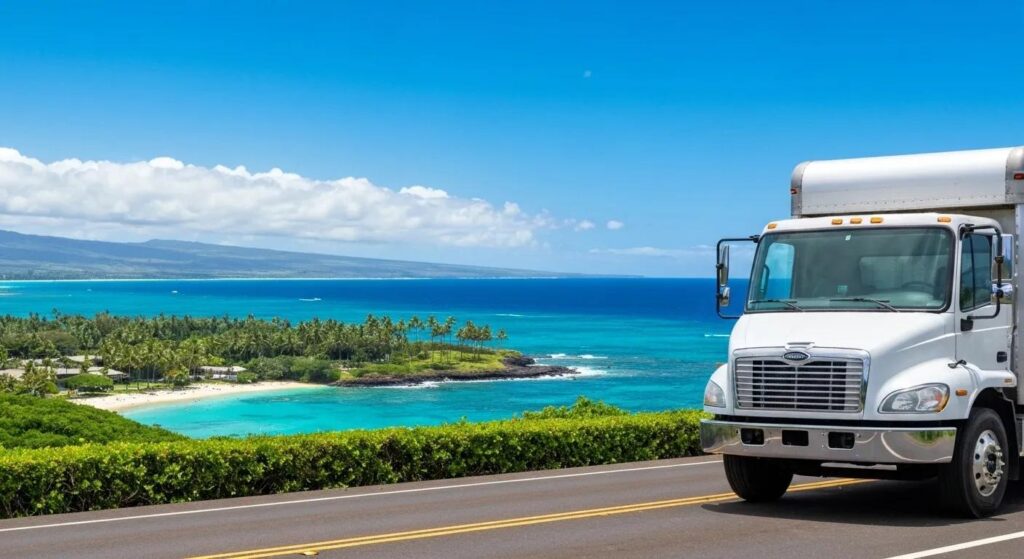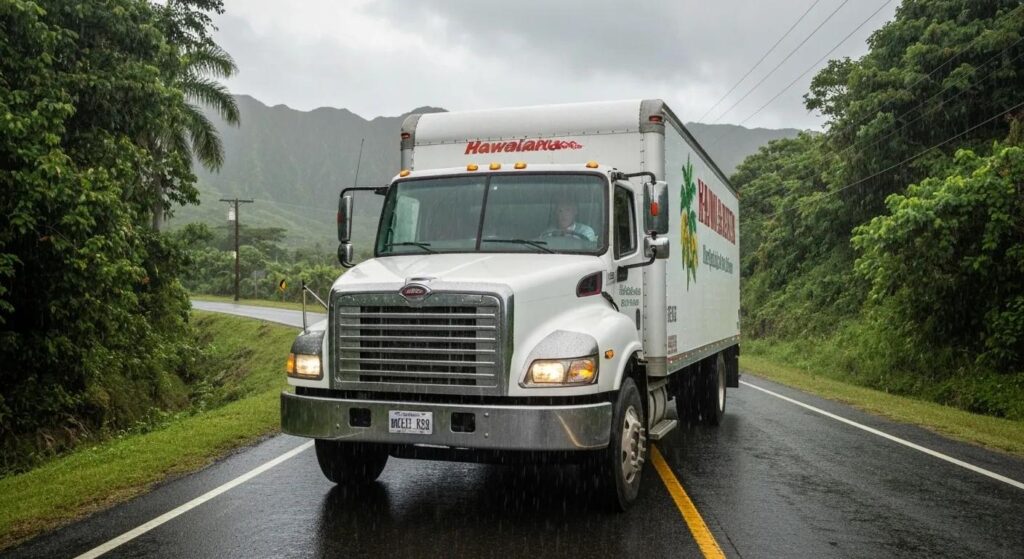What You Need to Know About Hawaii's Moving Insurance

Hawaii Movers: Your Essential Guide to Navigating Moving Insurance Costs, Coverage, and Requirements
Relocating to Hawaii presents unique logistical hurdles and environmental factors that significantly increase the risk of damage or loss to your belongings. At Hercules Moving Solutions, we’re your dedicated moving coordinators, seamlessly integrating customized insurance options into our long-distance moving services and Honolulu moving packages. Our goal is to ensure complete transparency and your absolute peace of mind. This comprehensive guide will walk you through why moving insurance is absolutely crucial for your Hawaii move, explore the primary types of coverage available, detail state and federal regulations, break down cost factors and smart savings strategies, and provide a clear roadmap for filing a claim. With this knowledge, you’ll be well-equipped to safeguard your cherished possessions and confidently request a personalized quote.
Hawaii Movers: Why Moving Insurance is Non-Negotiable for Your Relocation
Moving insurance acts as your ultimate safeguard against unexpected events, from shipping mishaps and the rigors of ocean transport to potential damage during inter-island transfers. By clearly defining liability limits and coverage protocols from the outset, it provides essential financial protection and significantly reduces stress through straightforward reimbursement processes. Grasping these core principles will empower you to select the perfect policy for your Hawaii move, especially when considering the specific local challenges that necessitate specialized coverage.
What Unique Challenges Impact Moving Insurance in Hawaii?

Hawaii’s heavy reliance on sea freight and inter-island transportation exposes shipments to the perils of saltwater corrosion, severe weather, and the complexities of transloading. These elements heighten the likelihood of scratches, dents, or water damage far beyond what’s typical for overland moves. Understanding this environment underscores why standard released value liability often proves insufficient and why opting for full value protection or supplementary third-party coverage can offer superior peace of mind.
How Does Moving Insurance Guarantee Peace of Mind for Your Valuables?
Robust insurance coverage establishes clear financial parameters and deductible terms, ensuring that replacements or repairs are handled swiftly following a validated claim. This structured protection allows you to fully immerse yourself in settling into your new island home, free from the anxiety of misplaced heirlooms or damaged furniture. With well-defined procedures and dedicated support, your moving insurance becomes the bedrock of a secure and worry-free relocation.
Exploring the Main Types of Moving Insurance Available in Hawaii
Moving companies in Hawaii typically present three fundamental valuation options: released value liability, full value protection, and third-party supplemental insurance. Each option represents a distinct balance between the mover’s liability, your responsibility, and the overall cost. By carefully comparing these choices, you can pinpoint the combination that best aligns with your personal risk tolerance and budget for both mainland-to-Hawaii and inter-island moves.
What Exactly Is Released Value Protection and What Does It Cover?
Released value protection offers a baseline level of carrier liability, calculated at a modest $0.60 per pound for each item. While this option helps minimize your premium costs, it significantly limits reimbursement to weight-based estimations rather than the actual value of the item. This coverage is generally suitable for goods that are of low monetary value and easily replaceable, but it may leave you underinsured for valuable antiques or sensitive electronics.
How Does Full Value Protection Differ, and What Are Its Key Benefits?
Full value protection places the responsibility squarely on the carrier to cover the cost of repair, replacement, or a cash settlement up to the total declared value of each item. This comprehensive coverage dramatically reduces your potential out-of-pocket expenses and simplifies the claims resolution process. For your most prized possessions, full value protection ensures you receive compensation reflecting their true replacement cost, rather than a minimal, weight-based amount.
When Should You Seriously Consider Third-Party Moving Insurance in Hawaii?
Third-party insurance policies are designed to bridge any gaps left by the mover-provided options, offering coverage for unique perils such as extreme weather events or particularly high-value collections. If your move involves transporting fine art, rare musical instruments, or specialized commercial inventory, these supplemental policies provide enhanced liability limits and expert claims handling. Carefully evaluating these specific scenarios will help you determine when external coverage offers truly meaningful protection.
Understanding Hawaii Moving Insurance Requirements and Regulations
Moving companies operating in Hawaii are bound by both federal and state statutes that meticulously govern carrier liability, consumer disclosure requirements, and claims processing procedures. A thorough understanding of these legal frameworks empowers you to confidently assert your rights and ensure that your chosen provider is fully compliant with all mandatory insurance obligations.
What State and Federal Laws Govern Moving Insurance in Hawaii?
For interstate moves, the Federal Motor Carrier Safety Administration (FMCSA) sets the standards, mandating minimum released value liability and requiring movers to provide written disclosures of all available coverage options.
Federal Regulations for Moving Company Liability
This research directly supports the article’s explanation of federal requirements for moving insurance and the differences between Released Value and Full Value Protection.
Intrastate relocations within Hawaii fall under the jurisdiction of the state’s Department of Commerce and Consumer Affairs (DCCA) regulations, which establish strict licensing standards, bonding requirements, and prescribed valuation disclosure protocols.
Hawaii State Regulations for Motor Carrier Insurance
This information verifies the article’s claims regarding state-specific regulations for moving insurance in Hawaii, including the roles of the DCCA and PUC.
What Are Your Consumer Rights Under Hawaii Moving Insurance Laws?
These protective laws ensure that movers must furnish a clear bill of lading, thoroughly explain all coverage choices, and conduct prompt investigations of any claims filed. You possess the right to review carrier insurance certificates, formally dispute any inadequate settlement offers, and seek official mediation through the DCCA if necessary. These robust protections foster accountability and guarantee a transparent resolution process.
Estimating the Cost of Moving Insurance for Your Hawaii Move
The pricing of your moving insurance is influenced by a variety of factors, including the distance of your move, the total weight of your shipment, the declared value of your possessions, and the specific coverage tier you select. By understanding these key drivers, you can accurately estimate your premiums and explore effective cost-saving tactics without compromising on essential protection.
What Factors Influence Hawaii Moving Insurance Pricing?
The primary determinants of your insurance cost include the total declared value of your household goods, the percentage of coverage applied for full value protection, the overall weight of the shipment, and whether you require supplemental coverage from a third-party provider. Naturally, longer-distance routes and higher declared item values will proportionally increase your premiums.
How Can You Secure the Best Moving Insurance Rates in Hawaii?
To optimize your insurance costs, consider strategically combining released value liability for lower-value items with full value protection for your more valuable possessions. Consolidating your shipments can help minimize transloading events, and diligently comparing quotes from various carriers and independent insurers is crucial. Accurately declaring the value of your items and actively seeking competitive bids will help you strike the ideal balance between cost and comprehensive coverage.
How to File a Moving Insurance Claim in Hawaii
Filing your claim promptly and with meticulous accuracy is the key to streamlining the reimbursement process and maximizing your settlement outcome. Thorough documentation, timely notification, and strict adherence to the carrier’s timelines form the essential foundation for a successful claims experience.
What Are the Step-by-Step Procedures for Filing a Claim?
- Document any damage immediately by taking clear photographs and writing detailed notes for each affected item.
- Notify your moving company in writing within the timeframe specified by the carrier (typically within 9 months for interstate moves or 30 days for intrastate moves).
- Submit all necessary documents, including the bill of lading, your detailed inventory list, repair estimates, and proof of value, to the insurer.
- Fully cooperate with insurance adjusters, schedule any required inspections, and provide any additional information they may request.
- Carefully review all settlement offers and be prepared to negotiate if necessary before formally accepting payment.
Diligent adherence to these steps ensures you meet all procedural requirements for a smooth and efficient claims experience.
What Should You Do If Your Moving Insurance Claim Is Denied?
If your claim is initially denied, formally request a written explanation that clearly cites the specific policy provision that led to the denial. Gather any supplementary evidence you can—such as original receipts, expert appraisals, or witness statements—and formally appeal through the carrier’s established dispute resolution process. If the internal appeal process does not yield a satisfactory outcome, you have the option to file a formal complaint with the Hawaii DCCA or the FMCSA to escalate the matter and ensure your rights are protected.
Securing the right insurance plan for your belongings transforms what could be a complex Hawaii move into a confidently secure experience. By carefully selecting tailored coverage, thoroughly understanding all legal requirements, and diligently following clear claims procedures, you can significantly minimize financial risk and reduce stress. Hercules Moving Solutions is fully prepared to integrate these essential protections into your Honolulu moving service and long-distance moving company offerings, guaranteeing unwavering reliability every step of the way. Reach out to us today to request a transparent, no-obligation quote and secure your truly stress-free relocation.